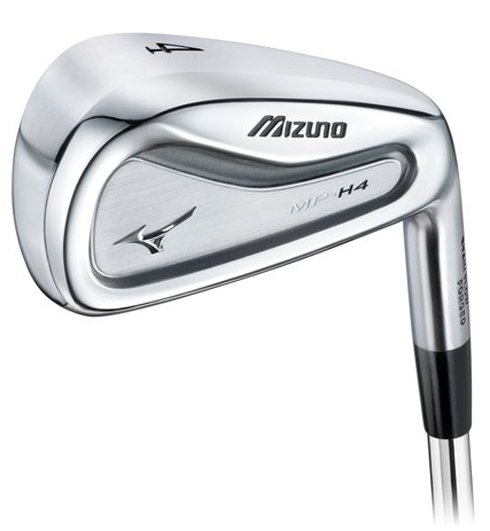 For the last few years now, Mizuno has maintained a lineup of clubs that included two different families of irons. For better players, there is the MP line of clubs which offer great feel and workability but little in the way of forgiveness. For players seeking more forgiveness, Mizuno has also offered a game improvement line; first it was the MX line and in more recent years, the JPX line. With the release of the new MP-H4 irons, Mizuno has blurred the line between players and game improvement irons, and let me tell you, it’s a good thing.
For the last few years now, Mizuno has maintained a lineup of clubs that included two different families of irons. For better players, there is the MP line of clubs which offer great feel and workability but little in the way of forgiveness. For players seeking more forgiveness, Mizuno has also offered a game improvement line; first it was the MX line and in more recent years, the JPX line. With the release of the new MP-H4 irons, Mizuno has blurred the line between players and game improvement irons, and let me tell you, it’s a good thing.
Test Model Details
The set that I received from Mizuno was the standard 3-PW set. The set came stock with True Temper Dynamic Gold shafts in stiff flex (S300). These are shafts that I have played in various irons before and from those experiences I found that they fit my game reasonably well. I’ve always been on the fence between regular and stiff shafts and have always opted to bump up a flex; I may lose a bit in distance but I feel that my dispersion is better. The set I received also came with Mizuno’s stock grip, recently updated from the M-21 58 round to the M-31 58 round. The grip is made by Golf Pride and it is essentially the Tour Velvet with Mizuno markings.
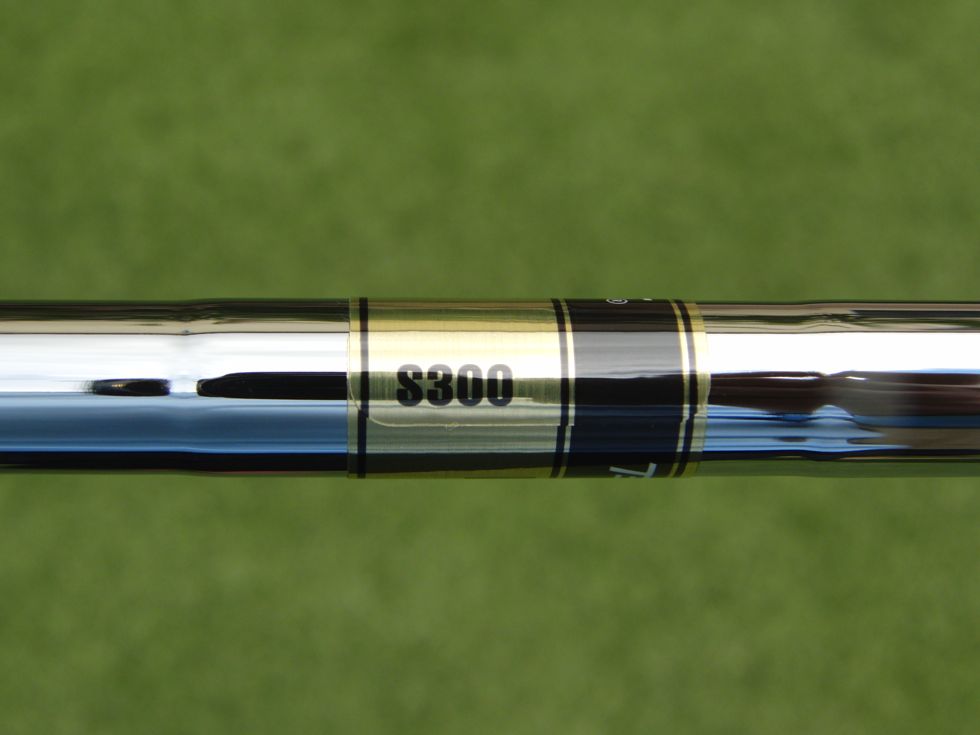
Specifications
Club Loft Length Lie Offset ---- ---- ------ --- ------ 3I 21° 38.75" 59.5° 0.146" 4I 24° 38.25" 60.0° 0.146" 5I 27° 37.75" 60.5° 0.142" 6I 30° 37.25" 61.0° 0.138" 7I 34° 36.75" 61.5° 0.130" 8I 38° 36.25" 62.0° 0.122" 9I 42° 35.75" 62.5° 0.114" PW 46° 35.50" 63.0° 0.106"
Technology and Design
As I said before, these clubs blur the line between game improvement and players irons, and the way they do that is though the technology and design of the club. According to Mizuno, these clubs were built to fit the games of golfers with handicaps between 2 and 14. Golfers in that range tend to hit their short irons well and looking at the construction of the 8, 9, and pitching wedge of the MP-H4s you will see the typical one-piece design of a players club. The scoring clubs feature a half cavity and a shallow center of gravity which enhances the workability of the clubs.
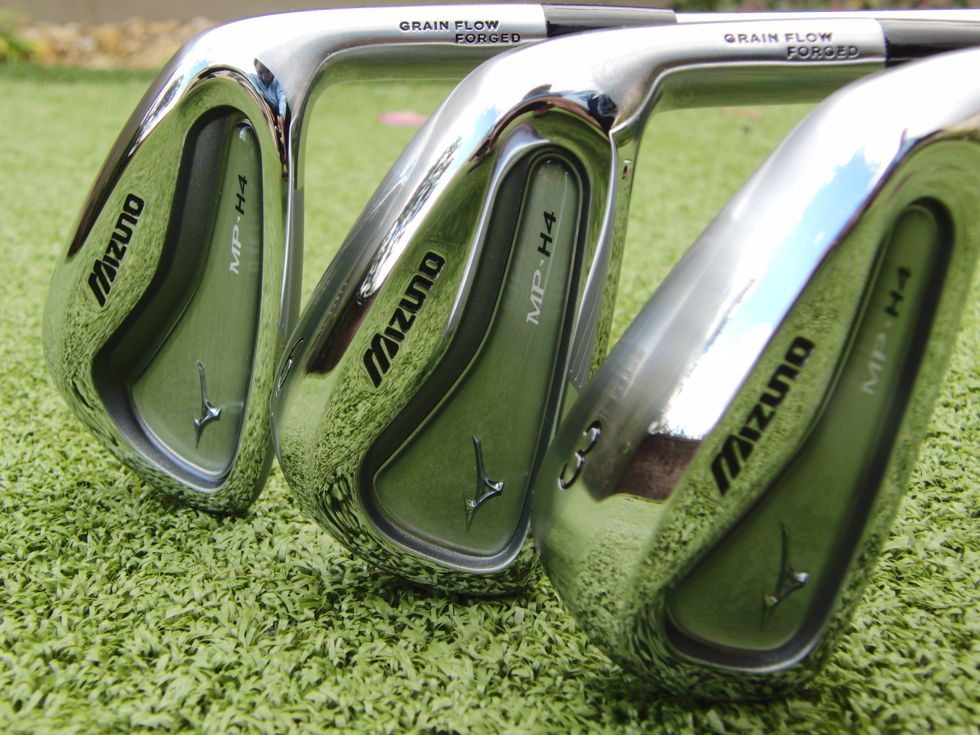
Moving into the mid and long irons, the construction of the club changes from a single-piece to a two-piece build and features Mizuno’s Hollow Hybrid Iron Technology. The longer irons (2-4) have a large hollow space inside the club and feature a center of gravity that is low and deep to make them easy to launch. The middle irons (5-7) have a reduced hollow space and a medium center of gravity depth giving higher MOI and greater forgiveness.
While there are three different iron constructions within the set, Mizuno has done a wonderful job making sure that the transition from long to mid to short irons is a seamless one. This is a pretty cool feature when you consider how popular it has become to use combo sets that include easier to hit long irons of one model and more blade-like short irons of a different model. Combo sets have always intrigued me because you get forgiveness on one end and workability on the other, but having two different styles of irons can throw off the consistency of the set. With the MP-H4’s, Mizuno has essentially created a set of iron with all of the benefits of a combo set but with the added advantage that all of the clubs look and feel the same.
Like all clubs in Mizuno’s MP line, the MP-H4s are forged using Mizuno’s Grain Flow Forged technology. It is this forging process that has given Mizuno its appeal to so many golfers and is responsible for the super soft feel that so many associate with their irons. Using Modal Analysis software and the company’s own Harmonic Impact Technology, Mizuno has scientifically optimized the sound and feel of these clubs at impact.
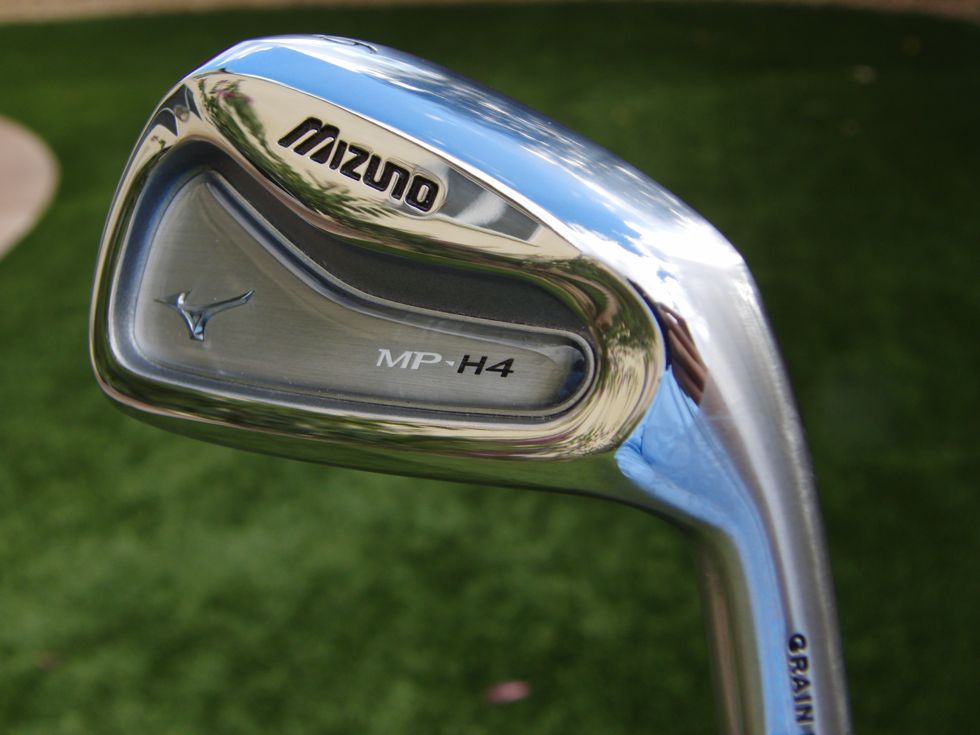
While the MP-H4 irons share much in common with game improvement clubs, they still have the set make up of a more traditional set. The vast majority of manufacturers are going to a 4-PW, GW set-up for game improvement clubs, but that is not what you will see with this line of clubs. The standard set make up is 3-PW and there is no matching gap wedge available, although for those interested, there is a 2 iron. Also, while game improvement clubs tend to have stronger lofts, the lofts of these clubs is much more traditional by today’s standards.
The idea behind the MP-H4s seems to be that they are a bridge between game improvement and players irons. This is exactly what they are to me. You get the looks, feel, set-up and workability of a players club but the forgiveness of a game improvement club. Overall, I would say that Mizuno has done very well in the design of these clubs towards their target audience. They are clubs that somebody with a low double digit handicap can play without being punished while not taking any shots out of the bag of the more skilled player.
Esthetics
Esthetically, these clubs rank among the best available today. I’ve always have found simple designs that lacked large badges, designs, logos, etc. to be the most desirable, and these clubs nail that look. They have a beautiful mirror finish with just the number of the club on the sole. On the back of the club you will find the Mizuno name at the top, with a small Runbird (Mizuno’s logo) in the bottom left of the cavity and “MP-H4” in the bottom right. Along the hosel are the words “Grain Flow Forged.” When set up to the ball you will see that the heel and toe have the same shinny finish as the perimeter of the club while the face takes on a satin finish. This frames the ball beautifully at address. The only negative to this is at times you can get quite a bit of glare off the shinny metal.
In the Bag Drop covering the release of these clubs (as well as the other new offerings from Mizuno) one user commented that companies often feel the need to “bling out” their game improvement clubs while they leave the players clubs “understated and elegant.” The MP-H4s are going to appeal to those that want a club with more forgiveness without giving up that “understated and elegant” look.
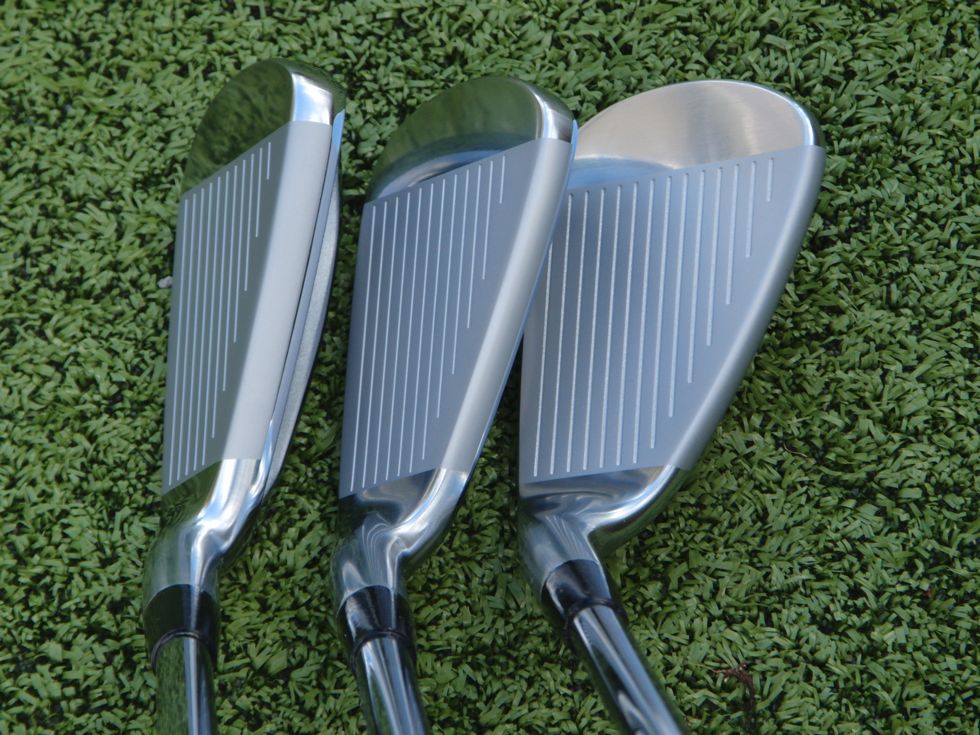
Looking at these clubs at address, you will notice that the top line progresses from thick to thin as you move throughout the set. The longer irons (3 and 4) have a fairly thick top line, and when set up at address, you will see a good portion of the cavity behind the ball. This is mainly because of the hybrid design of the club that, as mentioned above, has a large hollow space inside the head. As you move down into the mid and short irons, where that space becomes smaller and then is gone completely, you will see that the top lines become thinner and you no longer see the cavity at address. Overall, these are probably the thickest top-lines you will see on a club in the MP line. That being said, the lines aren’t overly thick and they don’t look like shovels at address. By the time you get down to the short irons, the top line is barely thicker than those of the MP-64s.
For fans of clubs with a lot of offset, these are not the clubs for you. I have never liked a lot of offset on my irons and find the MP-H4s to be pretty much perfect in that respect. To put it into perspective, the pitching wedge in the set has the same amount of offset (0.106″) as the pitching wedge in the more blade-like MP-64s and the three iron only has 0.024″ more (0.146″ vs 0.122″).
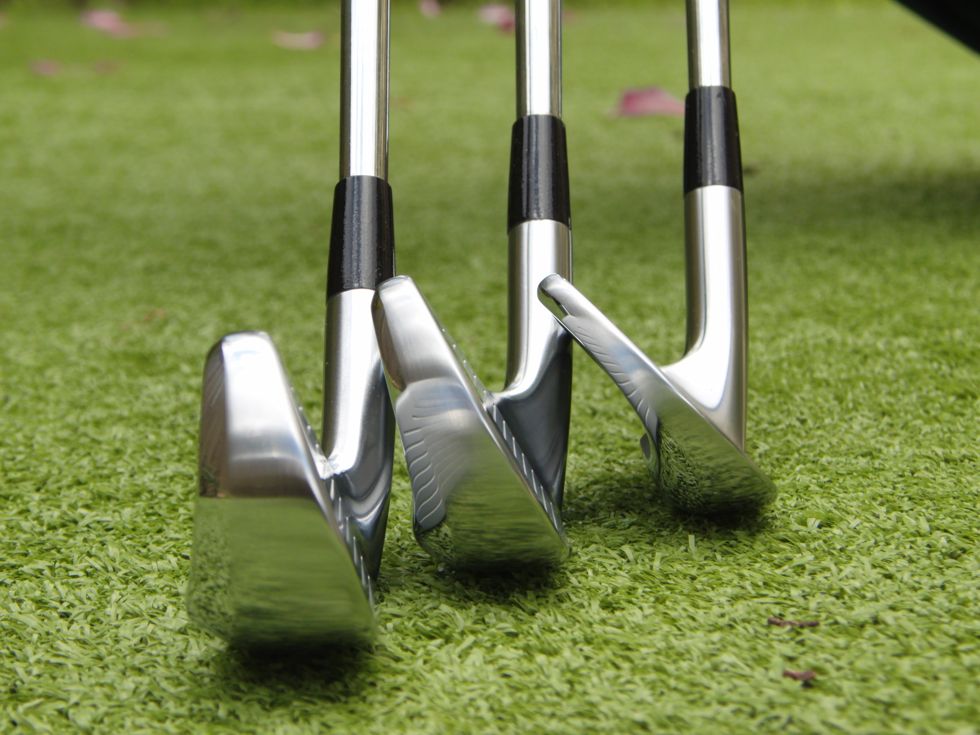
As with the top lines, the soles on the MP-H4’s range from thick in the longer irons down to what I would call normal in the short irons, and once again this is because of the hybrid design of the long and mid irons. The extra meat isn’t necessarily a bad thing either, especially on on the long irons. While a club that has a narrow sole and thin top line can be pretty to look at, you also know that there isn’t much room to miss; with these, you know that a slight miss won’t be nearly as punishing and that inspires a little bit of confidence.
Performance
Setting aside all of the stuff about technology, design, and esthetics, what really matters is the performance of the club. It is nice to have a club that is loaded with technology or one that looks great but if it doesn’t perform it will ultimately be replaced by something that will. The good thing is that Mizuno backs up all of the good looks and technology of the MP-H4 with an iron that performs great.
First, I’ll talk about my ball flight. I’ve never been one to hit high iron shots, instead hitting a lot of shots that may be described more as line drives. This is especially true with my long irons. That changed a bit with my last set of irons, as they had the Nippon NS Pro 950 GH HT shafts which are designed to get the ball into the air. As I said earlier, I’ve played the Dynamic Gold shafts in my clubs before, and they fit pretty well, however, I always found that I struggled to get the height that I wanted out of them. Since I had been playing shafts that were designed to get the ball up into the air, coupled with my previous experiences with Dynamic Gold shafts, I was a bit worried that I’d loose the height that I’d come to expect with my previous irons. However, as it turns out, that fear was unwarranted as the design of the clubs makes these shafts the right ones for me. With the center of gravity low and deep on the long irons, and still fairly low on mid irons, I had no problem getting the ball up into the air and doing what I wanted it to do.
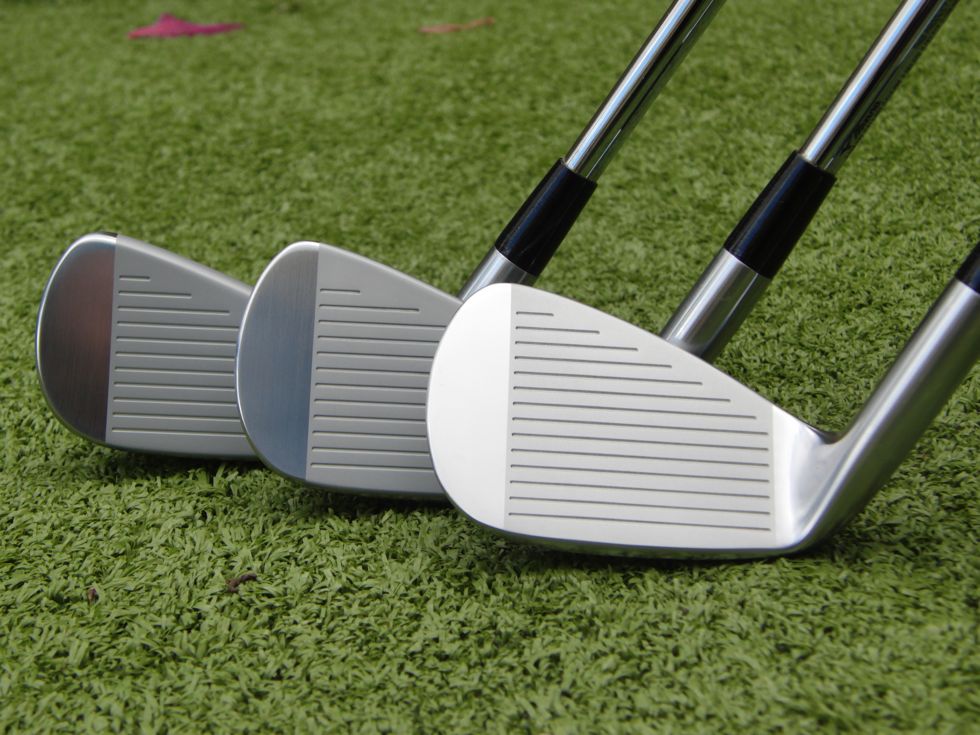
A great example of this came during a recent round at my home course at Terra Lago. I was on the South Course and came to number four, which is a downhill, 161 yard par 3 from the “Championship” tees (one forward from the tips). The hole is set up on the side of a hill, so that there is a hill to the left, the green, and a severe drop off to the right. The green also runs from left to right, front to back. With the pin in a middle position, it called for about a 155 yard shot that would land just on the front edge; for me that’s a stock 7 iron. I was able to hit the shot I wanted perfectly, just a little fade on it, and it landed on the front of the green and rolled right into the hole, giving me my first ace.
However, being the golfer that I am, not all shots are nearly as perfect. I definitely have my share of mis-hits, and this may be where these clubs excel the most. What I like most about these clubs is that they provide a good balance between giving good feedback while not overly punishing a bad shot. Mizuno has put a lot of work into getting the feel of these clubs to the level that golfers have come to expect out of them, and when you strike a ball dead-center in the face, these clubs feel great. When struck off-center however, they still feel pretty good. It doesn’t quite have the same “buttery” feel as a great shot but in no way does it hurt your hands or anything like that. The same thing goes for the results of dead-center and off-center shots. While a perfectly struck 7 iron will be about 155 yards for me, one that I just missed might loose a couple yards that the most. For golfers like me who spend a lot of time around and close to, but not on, the center of the club face, these irons are great.
Conclusion
The bottom line is that these clubs provide a great middle ground between game improvement clubs and harder to hit players irons. Thinking about it, I am having a hard time thinking of somebody that I would not recommend these clubs too. While Mizuno says that the MP-H4s are aimed at those with handicaps between 2 and 14, I honestly feel that even a bogey golfer or worse could play these irons and really not loose anything. Whether you are a weekend hacker looking for forgiveness, a mid-capper looking for an iron that won’t limit you as you improve, or a single digit looking for a club with great feel and workability, the Mizuno MP-H4 irons may be just what you are looking for.

Tristan:
Thanks for the review of these new clubs. I just purchased the MP-59s for PW through 6. I like them, as they look fantastic and my mis-hits tend to be short, but not too much left or right.
The MP-H4s look fantastic, which for me is important. Like you, I abhor the bling of a lot of clubs – these fit my eye to a “T.” Also they seem to be even a little more forgiving than my 59s, which will be good for the longer irons.
Based on your review, I am thinking of getting a 5 and 4 from the MP-H4 line. Then I need to look at filling out the remainder of my bag with some hybrids and fairway woods.
Question – I am assuming it will not be a problem to blend the MP59 and the MP-H4 lines together. What do you think?
Thanks again for the review, and congrats on the hole-in-one.
I don’t think you’d have a problem blending the two sets together… both sets have the same lofts/lies so they should work just fine.
Look like MX-200s to me. Maybe slightly smaller heads.
I just ordered these clubs from mizuno i ordered a 4-9 iron because i like my 588 for my pitching wedge. these clubs fit right into my set. i have a 21 degree hybrid and a 46 dregree pitching wedge. I am so excited for these clubs i had a set of cast mizuno 4 years ago and had trouble hitting them. THe forged is butter wow.
OH sorry I ordered them with TT gs95 shafts a high hitting shaft which for me thats what i like in all my clubs high bombs !
Thanks for the review. I am still using some old MX-20’s that I am still happy with, but these are beautiful. I am tempted to upgrade now!
Mizuno IMO makes the classiest looking irons on the market bar none.
THEY LOOK CUTE…… BUT A REASON WHY NOT ALOT OF PLAYERS USE THEM.
From what was said in this review, I think MP-H4 might be the current model of MX 23. I just bought a set of MX 23 recently, out of carton box, brand new. Strange enough? MP-H4 is just the same as MX 23 from its outlook, so-called grain flow forging, and purpose(improvement/game) of the product line. The forgiveness and feeling of hit is just the same as described here for MP-H4. Some people say JPX 800 is the substitute model of MX 23. But, they are not alike in any respect.
Going to be fitted at Golftown tomorrow for a new set.
As I have never been fitted, I am curious what club and shaft they will suggest.
Currently using TM Burner 2.0 with Project X 6.0 shafts and want more consistent length.
I am probably a 10 handicap but did have a 74 last year.
I tried the MP H4 and was pleased with minimal dispersion but a little displeased with loss of distance.
I hit my scoring irons quite high and noticed the lofts are higher than my Burner 2.0s (Rocketbladez Tour, Callaway X forged are about the same).
If I do go with the H4s, I will have the scoring irons delofted.
I do want forged this time and I am wondering if there is anything as good as the H4s with a little more length.
Any comments?
Thank you for this thorough review Tristan. If I missed the comparison, I apologize, but how would you compare the MP H4 to the Mizuno 825 Pro irons featured this year? I play to an 8-9 Handicap and have had Mizuno MX 23s in my bag for about 6 or 7 years. Really love the Forged Feel but am looking for something slightly more forgiving without resorting to a game-improvement cast club. I am more of a “sweeper” than a “digger”. Thanks!
Just switch from MP-53 to MP-H4 with Ozick Matrix Program 130 shaft. Dropped my handicap from an 8 to 5. Crazy easy to hit!!!!
These are quite possibly the shortest clubs I have every hit. I’m a 7 hdc. player that normally flys a 7 iron 155-165 yards with any forged club. The 7 iron in this set was 15-18 yards shorter. And that was throughout the set. Flight was good but they don’t go anywhere. I’ve passed them around to my fellow players and they all say the same thing. “what’s wrong with those clubs. They don’t go anywhere???”
Sorry Mizuno….love your stuff, but this is not one of them.
I presently use the mp-68, 3-pw. Added the h-4 2 iron. It’s a bit chunky but flies very nicely. Easy to hit, and you can crank it up if you feel the need. This is a 260yd club for me. I have one bent to a 1 iron also. They don’t quite feel like the mp-68, but they’re pretty good.
till todate i am still using my H4 irons and my hcp is 24…love the butterly feel when hitting it.